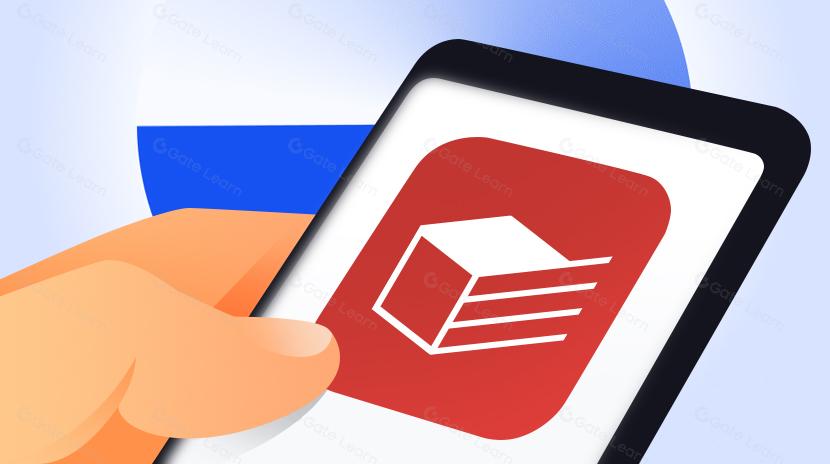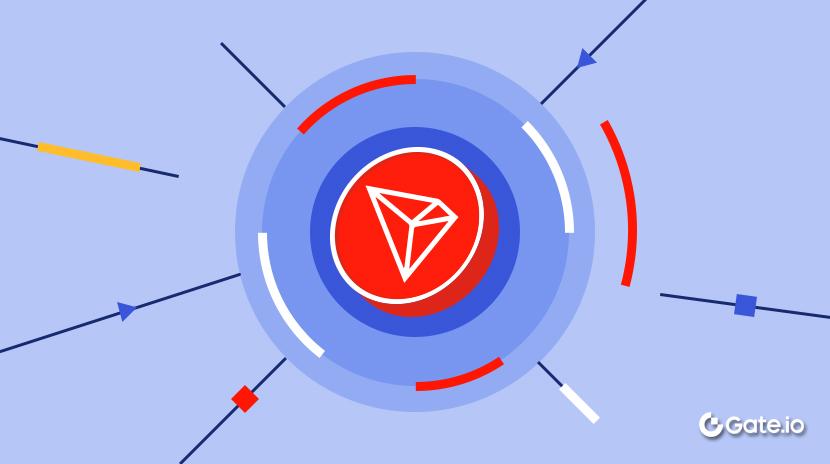ما هو Eclypse.xyz؟
عندما يتعلق الأمر بتوسيع قدرة بلوكشين، يبحث المطورون بشكل متزايد عن حلول تجمع بين القدرة العالية على معالجة البيانات مع الوصول إلى السيولة العميقة. غالبًا ما تواجه الشبكات التقليدية من الطبقة 1 تنازلات بين السرعة واللامركزية، بينما تقتصر معظم حلول الطبقة 2 على أداء EVM. تظهر نهج جديدة لسد هذه الفجوات من خلال دمج بيئات التنفيذ عالية الأداء مع طبقات الأمان والسيولة الموثوقة. من خلال دمج الجهاز الظاهري السريع والفعال لـ Solana مع بنية التسوية القوية لـ Ethereum، يهدف أحد هذه الحلول إلى تحقيق هذا الوعد. يتجسد هذا النهج من خلال Eclipse.xyz.
ما هو إكليبس.إكس.واي.زي؟
تأسست في يونيو 2022 من قبل نيل سوماني، الذي كان باحثًا سابقًا في سيتاديل ومهندس برمجيات في شركة Airbnb، ولدت Eclipse من طموح تجميع التنفيذ عالي الإنتاجية مع أمان Ethereum. قام سوماني، الذي استكشف سابقًا توسع قدرات سلسلة الكتل Ethereum من خلال البحث في Ethereum rollup، بإطلاق Eclipse Labs لبناء طبقة 2 أدائية باستخدام Solana Virtual Machine (SVM). دعمت Eclipse في وقت مبكر من قبل مستثمرين من الدرجة الأولى مثل Placeholder، Polychain، DBA، Maven11، Fenbushi، و Flow Traders، حيث حصلت Eclipse على تمويل بقيمة 65 مليون دولار. من بين الداعمين الفرديين البارزين: Anatoly Yakovenko، Mert Mumtaz، Segfault، Barnabé Monnot، John Adler، و Hasu.
في عام 2023، حظيت Eclipse بجاذبية لنموذجها "المتسلسل الضخم" - ابتكار يركز على تعظيم الإنتاجية من خلال البنية المعمارية المخصصة للمتسلسل. وقد وضع هذا الأساس لطبقة أداء الجيل القادم Giga Scale VM (GSVM)، التي شهدت أكثر من 100،000 TPS في اختبارات المختبر. بحلول يناير 2025، تم رسم الخارطة الزمنية للعامة تحت ثلاث مراحل تطوير - Highland، Longhorn، و Wagyu - كل منها يؤكد على الأمان واللامركزية والأداء وتجربة المطور.
في 8 فبراير 2025، أعلن الفريق عن إطلاق مؤسسة الكسوف، وهي هيئة حكم جديدة تهدف إلى الإشراف على لامركزية البروتوكول ونمو النظام البيئي. استمرت الذراع التنموية تحت معامل الكسوف، مع اتصالات منفصلة للبحث والتقدم التقني.
نمو Eclipse تركز على رؤية تقنية واضحة: بناء أسرع نموذج L2 يعتمد على SVM والأكثر ودية للمطورين. من خلال مبادرات مثل دلائل الاحتيال، إعادة توزيع MEV، تسلسل محدد للتطبيق وتكامل معرفي صفري، تقوم Eclipse بتحديد نفسها كمزود رئيسي للبنية التحتية لتطبيقات الجيل القادم المتمركزة. اعتبارًا من بداية عام 2025، ما زالت تستقبل المطورين وتحسن عميل GSVM الخاص بها، مع توقع إطلاق الشبكة الرئيسية في وقت لاحق هذا العام.
كيف يعمل Eclipse.xyz؟ الهندسة المعمارية والمعاملات

المصدر: eclipse.xyz
تنفيذ Eclipse.xyz تنفيذ بنية معمارية معمولة من التقنيات الرائدة عبر النظم البيئية Ethereum و Solana لتقديم تنفيذ سلس للبلوكشين بتكلفة منخفضة وآمنة. يجمع Eclipse Mainnet بشكل فريد بين خمسة مكونات أساسية: Ethereum للتسوية، Solana Virtual Machine (SVM) للتنفيذ، Celestia لتوافر البيانات، RISC Zero لإثبات الاحتيال، و Ethereum (ETH) للغاز.
تسوية مع إيثريوم
بما أن Eclipse هو أول طبقة Solana Virtual Machine Layer 2 لـ Ethereum، فإنه يُسوِّي مباشرة إلى Ethereum. إنه يدمج جسرًا تحققًا، الذي يعمل كالمصدر الكنسي للحقيقة، مضمنًا التأكد من أن جميع عقد Eclipse يحترمون نفس السلسلة. يوفر هذا الجسر ضمانات مثل المقاومة للرقابة والحيوية النهائية. إذا فشل مُسلسل أو حاول رقابة المعاملات، يمكن للمستخدمين فرض الاستدراج عبر الجسر. تقوم العقد في شبكة Eclipse بتشغيل عقد Ethereum الكاملة بشكل متوازٍ لضمان دقة وأمان المعاملات. يُستخدم ETH كرمز الغاز الأصلي على Eclipse، متماشيًا مع بيئات Ethereum-native DeFi و NFT. تشمل خطط المستقبل تمكين دفع رسوم الغاز باستخدام رموز أخرى مثل USDC.
التنفيذ عبر الجهاز الافتراضي سولانا
تستفيد Eclipse من SVM للتنفيذ نظرا لمزايا أدائها. على عكس EVM الخاص ب Ethereum ، والذي ينفذ المعاملات بالتتابع ، يستخدم SVM Sealevel ، وهو وقت تشغيل يسمح بتنفيذ المعاملات المتوازية. هذا أمر بالغ الأهمية لأن المعالجات الحديثة تضيف المزيد من النوى ولكن ليس المزيد من السرعة أحادية الخيوط. يتطلب SVM عقودا للإعلان عن وصول الدولة مقدما ، مما يسمح بوقت التشغيل لجدولة المعاملات الخالية من التعارض للتنفيذ المتزامن. يتيح هذا الهيكل أيضا أسواق الرسوم المحلية ، مما يمنع تطبيقا واحدا عالي الحركة من رفع تكاليف الغاز للشبكة بأكملها. على الجانب الأمني ، يمنع وقت تشغيل SVM هجمات إعادة الدخول عن طريق عزل الحالة وتقييد مكالمات الوافدين. بالإضافة إلى ذلك ، يحتوي SVM على مجموعة تعليمات أصغر وتصميم قائم على التسجيل ، مما يجعله أكثر ملاءمة لبراهين المعرفة الصفرية وعمليات التجميع المتفائلة.
توافر البيانات عبر سيليستيا
تنشر Eclipse بيانات معاملاتها على Celestia بدلا من Ethereum نظرا لإنتاجية Celestia العالية وفعالية التكلفة. في حين أن ترقية Proto-danksharding القادمة من Ethereum تعمل على تحسين عرض النطاق الترددي للبيانات (~ 0.375 ميجابايت لكل كتلة) ، إلا أنها لا تزال متخلفة عن Celestia ، التي من المقرر إطلاقها بكتل 2 ميغابايت ، وتوسيع نطاقها إلى 8 ميغابايت مع ظهور المزيد من عقد DAS الخفيفة عبر الإنترنت. يسمح Celestia للمستخدمين بالتحقق من توفر البيانات بأنفسهم باستخدام DAS ، على عكس لجان توافر البيانات التي تتطلب الثقة في الجهات الفاعلة الخارجية. على الرغم من أن DA خارج السلسلة يقدم افتراضا أمنيا مختلفا ، إلا أن Celestia mitiGate.ios هذا الخطر من خلال إجماع إثبات الحصة ، مما يجعل حجب البيانات قابلا للقطع.
دلائل الاحتيال مع RISC Zero
لإثبات صحة التنفيذ ، يستخدم Eclipse RISC Zero لتوليد دلائل على الاحتيال. بدلاً من الاعتماد على جذور Merkle ، يسجل Eclipse بيانات المدخلات / المخرجات المفصلة لكل عملية على Celestia. إذا نشأ خلاف ، يمكن للمحققين نشر دلائل الاحتيال ZK باستخدام RISC Zero لإثبات عدم الصحة في التنفيذ. يمكن للمحققين أن يشير إلى البيانات التاريخية لـ Celestia إذا تضمن الخطأ مدخلات غير صحيحة ، تم التحقق منها عبر Quantum Gravity Bridge. تتجاوز هذه النهج تسلسل الحالة المكلف وتمكن أنظمة مقاومة الأخطاء أكثر كفاءة وأمانًا.
ملخص الهندسة المعمارية
تتكامل بنية Eclipse بشكل وثيق مع مكونات سلسلة الكتل القابلة للتوسيع لتقديم تنفيذ من الطبقة 2 قابل للتطبيق وفعال. يوفر Ethereum تسوية آمنة ونهائية اقتصادية. تضمن آلة التشغيل الافتراضية لـ Solana التنفيذ المتوازي، مما يسمح بزيادة الإنتاجية. توفر Celestia قدرة توافر بيانات قابلة للتوسيع والتحقق منها، ويعزز RISC Zero اكتشاف الاحتيال وعدم الثقة. بـ ETH كرمز للغاز الأساسي لها ومع التجربة على الطريق، توضع Eclipse نفسها كمنصة للتداول السريعة والمرنة وصديقة المطورين المحسنة لتطبيقات dApps الجيل القادم.

المصدر: docs.eclipse.xyz
المعاملات
يتبع دورة حياة المعاملات على شبكة Eclipse Mainnet مسارًا منظمًا يبدأ بتفاعل المستخدم وينتهي بتسوية آمنة. يبدأ الأمر عندما يبدأ المستخدم معاملة عبر تطبيق لامركزي (dApp). يقترح dApp المعاملة، ويوقع المستخدم عليها باستخدام محفظته. ثم يتم تقديم هذه المعاملة الموقعة إلى عقد RPC. تدعم شبكة Eclipse Mainnet تفاعلات آلة القياس الظاهرية لإثريوم (EVM) وآلة القياس الظاهرية لسولانا (SVM). للحفاظ على التوافق، تقوم شبكة Eclipse بتشغيل عقد بروكسي للمعاملات القائمة على EVM. تترجم هذه العقدة البروكسي معاملات EVM إلى تنسيق SVM، الذي تستخدمه Eclipse كبيئة تنفيذها الأساسية. تتجاوز المعاملات الأصلية لـ SVM هذا البروكسي ويتم إرسالها مباشرة إلى عقدات Eclipse الكاملة التي تنفذ مواصفات SVM JSON-RPC.
بمجرد استلامها ، يجب تسلسل المعاملات. جهاز التسلسل ، وهو مكون منطقي في مكدس Eclipse ، مسؤول عن ترتيب المعاملات بالنسبة لبعضها البعض. هذه الخطوة حاسمة في إدارة سيناريوهات MEV (القيمة القابلة للاستخراج من عامل التعدين) ، حيث تعتمد فرص المراجحة بشكل كبير على أمر المعاملة. حاليا ، يستخدم Eclipse نموذج تسلسل مركزي ، على الرغم من أن خطط التسلسل المشترك أو اللامركزي قيد التطوير. بمجرد تعيين الترتيب ، يقوم جهاز التسلسل بحساب "فرق الحالة" بدلا من جذر الحالة العالمي الكامل ، مما يؤدي إلى تحسين التوازي وتقليل اختناقات الأداء.
إن إنتاج الكتل يتبع خطوة التسلسل. يقوم الجهاز المسلسل بدمج المعاملات في كتل، وحساب تحديثات الحالة، ونشرها على طبقة توافر البيانات (DA)، والتي في حالة Eclipse هي Celestia. ويشمل ذلك التزامًا بالمعاملات المرتبة واختلافات حالتها. لا يعتمد Eclipse على جذر حالة عالمي واحد لتجنب Eng bottlenecks، مما يسمح بزيادة الناتج الإجمالي.
الخطوة النهائية هي التسوية. يستخدم Eclipse نموذج تسوية متفائل. يتم إعادة نشر الكتل المنشورة إلى Celestia إلى Ethereum، حيث يمكن للمحققين - العقد الكامل - إعادة تنفيذ المعاملات والتحقق من الحالة الناتجة مقابل الالتزام المنشور. إذا تم العثور على عدم اتساق، فيمكنهم تقديم دليل على الاحتيال باستخدام zk-VM الخاص بـ Eclipse خلال فترة التحدي. إذا لم يطرأ تحدي صالح، فإن المعاملة تُنهي على Ethereum.

المصدر: docs.eclipse.xyz
منتجات Eclipse.xyz الأساسية
RPC ومستكشفو الكتل
تقدم Eclipse.xyz طبقة بنية تحتية شاملة تبدأ بوصول RPC قوي وأدوات مستكشف كتل متنوعة. يمكن للمطورين التفاعل مع بيئات Eclipse Mainnet و Testnet و Devnet2 عبر نقاط نهاية RPC بحدود معدلات مختلفة. توفر نقاط النهاية العامة مثل mainnetbeta-rpc.eclipse.xyz و helius-rpc.com مجانية ولكن بحدود معدلات، بينما تقدم مزودات RPC الخاصة مثل Triton و Helius خيارات وصول مشتركة ومخصصة لتطبيقات مقياس الإنتاج. تدعم العقد RPC دعوات SVM JSON-RPC، وتتضمن متطلبات الأجهزة لتشغيل العقد معالج بسرعة 12 نواة، 256 جيجابايت من ذاكرة الوصول العشوائي، وتخزين SSD.
مستكشفو الكتل مثل EclipseScan و Eclipse Dev Explorer و Eclipse XRAY و Celenium (لمسميات Celestia) يدعمون رؤية الشبكة في الوقت الحقيقي. تقدم هذه الأدوات تتبعًا شفافًا لبيانات المعاملات وتفاعلات العقود وتدفق الأصول. باستخدام Eclipse Testnet و Devnet2 ، يمكن للمطورين نسخ بيئة mainnet للتطوير والاختبار ، ويمكنهم نشر التطبيقات ومراقبتها بثقة عبر كامل Eclipse stack.

المصدر: eclipsescan.xyz
جسر كانوني الكسوف
يتيح جسر Eclipse Canonical للمستخدمين ربط ETH من Ethereum بـ Eclipse Mainnet عبرhttps://bridge.eclipse.xyz. في حين أن عمليات السحب معطلة حالياً، يتم دعم الودائع من خلال واجهة سطر الأوامر السهلة الاستخدام التي تتكامل مع محافظ Ethereum و Solana. يمكن للمستخدمين تمويل حسابهم في Eclipse من Ethereum Mainnet أو Sepolia عن طريق إنشاء عنوان إيداع مع Solana CLI، مما يضمن تفاعلًا سلسًا مع SVM-native. توسع Hyperlane أيضًا توافق Eclipse، مدعمًا لنقل الأصول مثل USDC، SOL، و WIF عبر Ethereum، Solana، و Eclipse. لا تصدر Eclipse رمزًا أصليًا؛ يظل ETH رمز الغاز والعملة الرئيسية، معززًا توجه Ethereum.

المصدر: app.eclipse.xyz/bridge
Mint tETH
تم إطلاق tETH بالشراكة مع Nucleus، وهو رمز تشفيري موحد للتحصيل السائل المصمم لتبسيط الوصول إلى مكافآت إعادة تحصيل Ethereum التي طورته Eclipse. من خلال دمج أفضل الرموز التشفيرية لإعادة التحصيل المتسائلة - eETH، ezETH، rswETH، steakETH، و pufETH - يوفر tETH أصلًا يحمل عائدًا متنوعًا يتبع عائد تحصيل ETH من خلال نموذج سعر تبادل. يُخترع على Ethereum ويتم ربطه بـ Eclipse عبر Hyperlane، يسمح tETH للمستخدمين بالمطالبة بمكافآت AVS إضافية بشكل منفصل. يمكن استرداده من خلال تبادلات الضمان أو الطلبات السريعة، مما يجعله أداة قوية لكفاءة إعادة التحصيل، وتوحيد السيولة، والفائدة في DeFi ضمن نظام النظير الناشئ من Eclipse LRTFi.

المصدر: app.eclipse.xyz/mint-teth
NFTs
يدعم Eclipse البنية التحتية المتقدمة للـ NFT من خلال تمديدات Token-2022 ومنصات مثل Libreplex. تعزز هذه الأدوات قدرة الخالقين على إصدار وإدارة وتداول NFTs ضمن إطار SVM، باستخدام تمديدات اختيارية وتخزين للبيانات الوصفية لتجارب مخصصة. يبسط Libreplex دورة حياة NFT بينما يعزز التوافق بين الأسواق. بفضل توافقه مع أدوات Solana، يمكن للمطورين إطلاق مشاريع NFT باستخدام واجهات برمجة التطبيقات المألوفة، مما يضمن وجود أدنى احتكاك. سواء كان الأمر يتعلق بالألعاب أو العناصر الجماعية أو الفن، فإن دعم NFT الخاص بـ Eclipse مبني للأداء والقابلية للتركيب، مما يدعو الخالقين إلى توسيع حدود الملكية الرقمية.
أدوات التطوير
توفر Eclipse التوافق الكامل مع أدوات تطوير Solana، مما يسمح بترحيل أو تجنيد سلس لبناة SVM الأصليين. يظل Rust اللغة السائدة، على الرغم من أن الأدوات مثل Seahorse تمكن من تطوير العقود الذكية بناءً على Python. يتم دعم بيئات التطوير المتكاملة مثل Visual Studio Code مع Rust Analyzer بشكل واسع. تشمل الأطر الرئيسية Anchor لهيكلة العقود الذكية ومكتبة برامج Solana (SPL) للمنطق القابل لإعادة الاستخدام. يمكن للمطورين التفاعل مع Eclipse من خلال Eclipse Wallet وMetaMask Snaps وSolflare أو Backpack.
موفري RPC مثل Helius و Triton One يضمنون بنية تحتية فعالة، بينما تقوم المستكشفات ولوحات القيادة بتبسيط عمليات الإصلاح والمراقبة. بفضل دعم الاختبار الشامل والبيئات المألوفة، يُسهل على مطوري Solana تحويل أو البناء مباشرة في بيئتها الأساسية SVM-based Ethereum L2.
برنامج الجوائز الخاص بالثغرات في الكود
الأمان أولوية لـ Eclipse، وقد شرك فريقها مع Immunefi لإطلاق برنامج مكافأة الأخطاء البرمجية القوي. مع جوائز تصل إلى 1،000،000 دولار، يتم تحفيز الباحثين على الإبلاغ عن الثغرات التي تتراوح من منخفضة إلى حرجة. يتم توزيع المكافآت في USDC وتقييمها استنادًا إلى الخطورة من خلال نظام تصنيف خطورة الثغرات Immunefi (V2.3). تقوي هذه المبادرة سلامة وموثوقية نظام الأمان الخاص بنظام Eclipse بينما تشجع على مشاركة المجتمع. تغطي المكافأة البنية التحتية الحرجة، بما في ذلك الجسر الكنسي، المتسلسل، العقود الذكية، وتكامل توافر البيانات، مع تعكس التزام Eclipse بتدابير الأمان الاحترازية والشفافة عبر بنيتها المعمارية للإرسال.

المصدر: docs.eclipse.xyz
حالات استخدام Eclipse.xyz
تقدم Eclipse.xyz بنية تحتية فريدة تدمج قابلية التوسع والتنفيذ المتوازي لجهاز العرض الافتراضي Solana (SVM) مع الأمان واللامركزية لإيثريوم. تفتح هذه الجمعية القوية الباب أمام العديد من حالات الاستخدام التي تستفيد من الرسوم المنخفضة والإنتاجية السريعة وقابلية التشغيل المتسلسلة.
- تطبيقات ديفي عالية الأداء: إكليبس مثالية للصرافات اللامركزية (DEXs)، ومجمعات العوائد، ومنصات الإقراض، وأسواق التنبؤ التي تتطلب تأخير منخفض وإنتاجية عالية. بفضل نموذج التنفيذ المتوازي للـ SVM، يمكن للتطبيقات تجنب العقبات والازدحام النموذجي في سلاسل EVM، مما يمكن تجربة المستخدمين بشكل أسهل. بروتوكولات مثل أوركا، والساعة الرملية، وسيف يستفيدون بالفعل من إكليبس لتقديم منتجات ديفي من الجيل القادم.
- البنية التحتية القابلة للتركيب لتطبيقات القرصنة النمطية: تدعم معمارية Eclipse أنماط التصميم القابلة للتركيب حيث يمكن للمطورين نشر عقود ذكية قابلة للتركيب وأدوات البنية التحتية التي تتوسع مع الطلب. يستفيد المطورون من مجموعة تراكمية مألوفة مع استخدام لغة البرمجة Rust وPython، مع الوصول إلى نظام البيئة الخاصة بـ Solana. كما يبسط التكامل مع الأدوات مثل Anchor و MetaMask Snaps و Hyperlane نشر تطبيقات القرصنة والتوافق مع بعضها البعض.
- توافق السلاسل العابرة والتوصيل: تسمح الجسور في Eclipse، بما في ذلك جسر Ethereum الكانوني وتكامل Hyperlane، بالتنقل السلس للأصول مثل ETH و USDC و SOL بين السلاسل. يجعل هذا Eclipse بيئة جذابة لتطبيقات العقود الذكية متعددة السلاسل وأسواق NFT ومنصات الأصول المرمزة التي تحتاج إلى أداء وتوصيل آمن بين النظم البيئية.
نظام Eclipse.xyz
تتوسع نظام البيئة Eclipse.xyz إلى شبكة نشطة من التطبيقات المتكاملة والبروتوكولات وأدوات المطور عبر DeFi والألعاب والبنية التحتية والتوافق بين السلاسل الجانبية. تم بناء Eclipse Mainnet على أعلى من آلة Solana الافتراضية (SVM) وتأمينها بواسطة Ethereum، ويوفر للمطورين والمستخدمين بيئة عمل عالية الأداء لتطبيقات dApps قابلة للتوسيع ومحاذية للمستخدم.
Dentro de DeFi, Orca se destaca como un intercambio descentralizado (DEX) de confianza, que ofrece un comercio de tokens fluido y provisión de liquidez. Sandglass permite un sofisticado comercio de rendimiento, mientras que Sharp Trade ofrece opciones y predicciones a la cadena, desbloqueando nuevas formas de especular y cubrir el riesgo. Save, un protocolo de ahorro sin permisos, proporciona a los usuarios estrategias de ganancias no custodiadas, haciendo que DeFi sea más accesible.
من ناحية المستهلك، يعمل ASC كمجموعة NFT الرسمية لإكليبس، داعما للاقتصاد الإبداعي الناشئ واقتصاد الحاجيات الجمعية. تعزز Backpack، المحفظة والمنصة من الجيل القادم، تجربة المحفظة والأمان للتفاعل مع نظام إكليبس.
تتضمن التكاملات البنية التحتية Etherscan، والتي تضمن الوصول القابل للقراءة للنشاط والبيانات على السلسلة، بالإضافة إلى Hyperlane الذي يسهل ربطًا سلسًا بين Eclipse وEthereum وSolana، مما يجعل توافق الأصول بديهيًا وفعالًا عبر النظم البيئية.
تعكس هذه التكاملات جزءًا فقط مما هو موجود بالفعل أو يُبنى على إكليبس. لقد جذب وضع البروتوكول الفريد عند تقاطع أمان إثيريوم وأداء سولانا مجموعة متنوعة من المُنشئين الذين يُقدرون السرعة والقابلية للتوسيع والقابلية للتكامل. سواء كنت تنشئ تطبيقات ديفي المالية اللامركزية، أو تطلق NFTs تستهدف المستهلكين، أو تبني البنية التحتية لجيل المستخدمين القادم من Web3، يوفر إكليبس أساسًا سريعًا وصديقًا للمُطورين مع الدعم الأصلي للغة Rust، Python (عبر Seahorse)، وأدوات مثل Anchor.

المصدر: eclipse.xyz/ecosystem
أخبار حول Eclipse.xyz
كما أعلن على مدونة مؤسسة Eclipse الرسمية في 28 فبراير 2025، تم إطلاق صندوق Eclipse Creator Fund لدعم الفنانين الذين يعملون على السلسلة وإحياء ثقافة الفن الرقمي في Web3. يهدف المبادرة، التي يديرها مجلس الفن، إلى استقطاب المبدعين من كل من نظامي Ethereum و Solana بينما ترحب بالمواهب من خارج عالم العملات المشفرة. مع التركيز على الإمكانية والرسوم المنخفضة ومدخلات المجتمع، يؤكد الصندوق التزام Eclipse بالفن والثقافة واللامركزية.
اعتزل مؤسس إكليبس بعد الاتهامات
في أكتوبر 2024، انسحب نيل سوماني، مؤسس مشروع إثيريوم الطبقة 2 إكليبس، من الواجهة العامة بعد ظهور اتهامات بسوء السلوك الجنسي على X، الذي نفاه بقوة. على الرغم من عدم تقديم أي تهم قانونية، أصدر إكليبس بيانًا يؤكد التزامه بالنزاهة والعدالة والمساواة بين الجنسين مع التعبير عن دعمه للشفافية أثناء التعامل مع الوضع.
المقالات ذات الصلة

ما هو Tronscan وكيف يمكنك استخدامه في عام 2025؟

كل ما تريد معرفته عن Blockchain

ما هي كوساما؟ كل ما تريد معرفته عن KSM

ما هو كوتي؟ كل ما تحتاج إلى معرفته عن COTI

ما هي ترون؟
